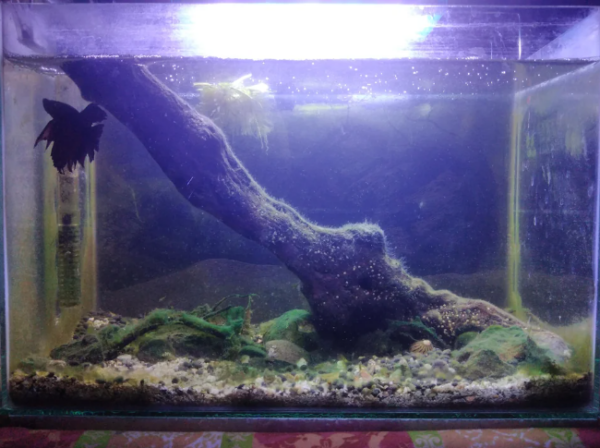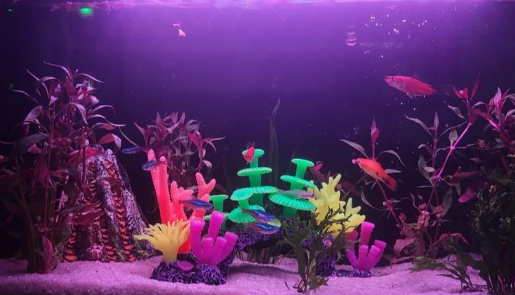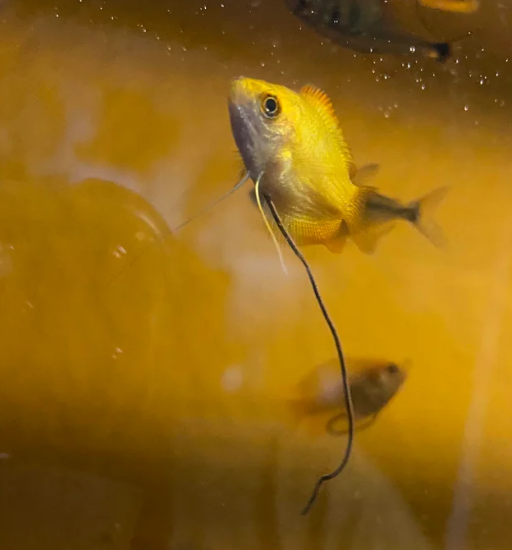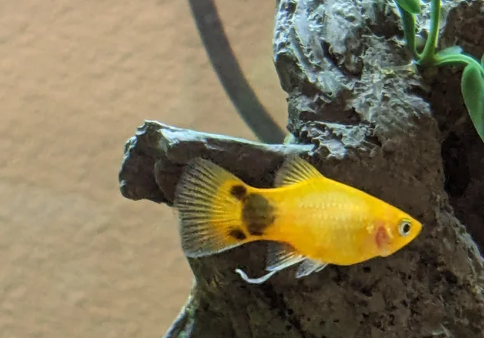While you may delay it, death in your aquarium is inevitable. Some of your fish are expected to perish within a few days of their introduction to the tank, whether due to accidents or natural reasons. Besides, numerous other reasons contribute to the overall reduced lifespan of aquarium fish.
However, individual deaths are not as alarming as mass mortality. While you should also investigate lone deaths to prevent them from happening in the future, consecutive fish deaths are more terrifying.
In this article, we’ll discuss why your fish die untimely and unnatural deaths. Whenever you’ve come across unfortunate deaths in your tank, investigate the issue by referring to this article.
Table of Contents
Top 10 Reasons Why Your Fish Keep Dying
1. Improper Water Parameters
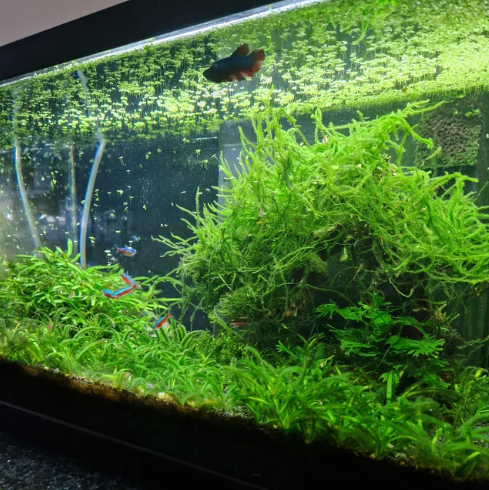
Different species of fish have unique preferences over water parameters. For instance, tropical fish flourish in distinct water parameters compared to cichlids. Even among their species, variations may occur in their requirements that need to be carefully maintained.
Whilst housing the compatible species together, a few water parameters that you need to monitor and manipulate when required are:
pH Level
A subset of fish species prefer acidic environments, while others thrive in more alkaline waters. Species-specific optimum pH levels ensure that your fish can perform basic physiological functions without hindrance. This includes proper gill function, enzyme activity, and osmoregulation.
Apart from those, ammonia toxicity and nutrient availability also partially depend on pH levels.
However, sudden pH changes or pH spikes are more fatal to your fish than a prolonged minute deviation. The most common reasons behind the same are:
- Overstocking. An overcrowded tank will produce more waste and consume more oxygen while breaking down—lowering the pH level.
- Inefficient filtration also allows organic matter to decompose in the tank, causing pH spikes.
- Amateurish water changes, disregarding dechlorination, pH stabilization, and temperature synchronization, can raise or lower your tank’s pH levels in an instant.
- Certain decorations and new substrates can alter pH levels pretty fast.
- Rapid plant growth can strip your tank water off of CO2, which may lead to a higher pH.
- Certain medications and additives can also manipulate the pH levels.
Constantly monitor pH levels in your tank and use commercial pH products to maintain the proper levels.
Water Hardness
Maintaining both general hardness (GH) and carbonate hardness (KH) is vital to sustaining a healthy aquatic environment. GH is the measure of dissolved minerals, including calcium and magnesium, which support the growth and well-being of both plants and fish.
On the other hand, KH measures the carbonate and bicarbonate content in your tank.
The primary reason to maintain water hardness is that a species-specific optimum water hardness stabilizes the pH levels and provides essential minerals to plants and fish. Your fish, especially those that are naturally reliant on hard water, such as cichlids, will suffer in softer waters.
Another factor to consider is that fish inhabiting soft water may be susceptible to bacterial infections unique to hard water environments and vice versa. These infections may arise due to differences in water chemistry, and the fish may lack cellular-level resistance to these specific pathogens.
Water Temperature
A stable and optimum water temperature is necessary to sustain the physiological activities of aquatic creatures. Being cold-blooded, their metabolism depends on the environmental temperature, and their internal organs may cease to function properly outside the optimal range.
Even if you strive to maintain an optimal temperature, water changes may cause a spike and introduce temperature shock to your fish. Always follow these tips to avoid the same:
- Invest in a good quality thermometer.
- Choose the right heater suitable for your aquarium. A general rule of thumb is to use 1 watt of power for every 2 gallons of water.
- Install the thermometer strategically along the filters and air pump.
- Perform regular water changes when the temperature has risen to an exorbitant degree.
- Avoid massive water changes that can cause temperature spikes in the tank.
- Regulate the temperature of the new water being introduced to the tank.
Additionally, you may insulate your tank, keep your tank indoors, and turn off lights at night to manipulate water temperatures.
Oxygen Levels
Dissolved oxygen is critical to the survival of your beloved fish and plants. Depending on the fish species, the minimum oxygen level may vary, but if you don’t have plants in the tank, there is no need to regulate the same. For planted tanks, you may consider CO2 injection for supplementation.
Typically, oxygen dissolves in water through direct absorption. Therefore, air pumps and increased surface agitation often levitate dissolved oxygen to healthy levels. Consider running the pumps 24/7 to achieve the best results.
2. Poor Water Quality
Moving on from water parameters, your fish may also have been dying due to poor water quality, especially regarding ammonia, nitrite, and nitrate in the tank. We’ll discuss them in brief and a few more elements that may be contaminating your tank.
Ammonia
- Source: Fish waste, uneaten food, decaying organic matter.
- Harm: Highly toxic to fish, even in small amounts. Disrupts respiration, damages gills, and can lead to ammonia poisoning.
Nitrite
- Source: Breakdown of ammonia by bacteria.
- Harm: Can interfere with oxygen uptake in fish blood, causing stress, respiratory problems, and even death.
Nitrate
- Source: Further breakdown of nitrite by bacteria.
- Harm: In excessive amounts, nitrate can promote algae growth, reduce oxygen levels, and suppress the immune system of fish, making them more susceptible to diseases.
Chlorine and Chloramines
- Source: Often found in tap water used for water changes.
- Harm: These disinfectants can kill beneficial bacteria in the aquarium and damage fish gills, leading to stress and respiratory problems.
Heavy Metals
- Source: Can be present in tap water, from plumbing fixtures, or contaminated decorations.
- Harm: Can accumulate in fish tissue over time, causing organ damage, reproductive problems, and even death.
Fertilizers
- Source: Supplementary nutrients for plants, consisting of CO2, minerals, and nitrate.
- Harm: Can be highly toxic to fish and disrupt the aquarium’s ecosystem.
3. Overfeeding or Underfeeding
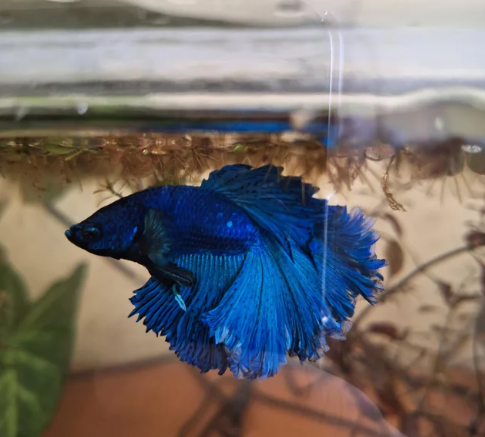
Feeding portions and frequency determine the overall well-being of your tank’s inhabitants. Inexperienced aquarists often confuse the love of fish with a certain food with hunger and overfeed them. You may also underestimate their nutrient requirement and underfeed or feed them the wrong type of food.
In dedicated tanks, where you’ve kept a single species, you can pretty effortlessly strike the right balance of diet and feeding routine. But, when it comes to community tanks, it’s challenging to cater to the needs of each inhabitant. You may overfeed some and underfeed others.
Risks of overfeeding involve:
- Water quality issues. Excess food decomposes and releases ammonia, poisoning the fish. Excessive ammonia production also overwhelms the bacteria colonies.
- Digestive problems. Consuming food more than necessary can overload your fish’s digestive system and cause bloating, constipation, and organ damage.
- Obesity. Fish are also susceptible to obesity and obesity-related diseases.
- Algae growth. Uneaten food promotes algae growth, depleting oxygen in the tank and harming the overall ecosystem.
Risks of underfeeding involve:
- Nutrient deficiency: Without adequate food, fish won’t get the essential nutrients they need to grow, develop, and maintain their health. This can lead to stunted growth, weakened immune systems, and increased susceptibility to diseases.
- Muscle loss: When deprived of food, fish will start to break down their muscle tissue for energy. This can make them appear emaciated, weak, and lethargic.
- Reproductive problems: Undernourished fish may struggle to reproduce successfully. They may produce fewer eggs or sperm, or the offspring may be weak and have lower chances of survival.
Pay attention to your fish’s behavior, appetite, and appearance. Any noticeable changes could be indicative of health issues.
Also Read: What Can You Feed Fish Other Than Fish Food?
4. Incompatible Tank Mates
Most of your fish are possibly captive-bred and lack any skills (or space) to avert predation. Beginner aquarists often lay the claim of tank aggression on “natural balance”, which ultimately harms both the predator and prey in the long run.
I used to wonder why my rainbow minnows were disappearing until I saw the turtle hunting them frantically at night. My inability to house compatible species can’t be laid upon their instincts.
If you’re keeping a dedicated tank, consider studying their tank requirements and social behaviors. Some fish species prefer company, while others thrive in solitude.
In community tanks, provide enough space according to fish species and house only species that are non-aggressive towards each other. Provide enough nutrients and keep water parameters stable to reduce competition and stress.
Also Read: The Freshwater Aquarium Water Guide
5. Disease or Parasites
Lack of proper quarantine routine, poor water quality, and improper water parameters can introduce diseases and parasites in the aquarium. If you live-feed your carnivorous fish, the feeder fish may also contribute to the overall pathogen scenario of the tank.
Let’s discuss strategies that can minimize the risk:
- Regular water changes remove waste products like ammonia and nitrite, which can weaken your fish’s immune system and attract harmful bacteria. Aim for at least 10-25% water changes weekly.
- Invest in an adequate filter suitable for your tank size and fish population. Maintain it regularly by cleaning the filter media and ensuring proper water flow. However, don’t kill off the beneficial bacteria while maintaining.
- As mentioned, regularly test your water for ammonia, nitrite, nitrate, pH, and temperature. Adjust any parameters that fall outside the ideal range for your fish species.
- Quarantine new fish and plants before introducing them to your main tank. Quarantine them for at least two weeks in a separate tank. This helps prevent the introduction of diseases or parasites.
- Pay close attention to your fish’s behavior, appetite, and appearance. Any changes could indicate stress or illness, which can make them more susceptible to pathogens. Isolate them once you’ve noticed physical or behavioral changes.
- Overcrowding increases stress and waste production, making your aquarium more vulnerable to outbreaks. Maintain a healthy livestock density based on your tank size and fish species.
- Select fish from reputable sources that maintain good hygiene and quarantine practices.
- Avoid overfeeding. Uneaten food decomposes, adding to the organic waste and creating a breeding ground for pathogens.
6. Stress
Environmental stress can weaken the immune system and make your fish susceptible to diseases. Sudden fluctuation of water parameters, aggressive tank mates, and inadequate hiding spots may introduce stress to the tank.
7. Improper Acclimatization
Acclimating your fish properly increases their survival rate and ensures a healthy introduction to the tank. Here’s a step-by-step guide to acclimating your fish:
Preparation
- Temperature Matching: Float the unopened bag containing your fish in your aquarium for about 20-30 minutes.
- Oxygenate the Bag: Ensure proper oxygenation throughout the acclimation process. Use an airstone or gently agitate the bag with your hand every 10-15 minutes.
Water Adjustment
- Open the Bag: After temperature matching, carefully open the bag.
- Add Tank Water: Over the next 15-30 minutes, slowly add small amounts of your aquarium water to the bag, diluting the bag water by about 50%. Repeat this process every 15-30 minutes for another 1-2 hours.
Netting and Introduction
- Net the Fish: Gently net the fish from the bag and avoid using a net with a fine mesh that could damage their fins.
- Turn off Lights: Turn off your aquarium lights to reduce stress for the newly introduced fish.
- Release the Fish: Release the fish directly into the aquarium, allowing them to adjust to the new environment at their own pace.
8. Poor Tank Maintenance
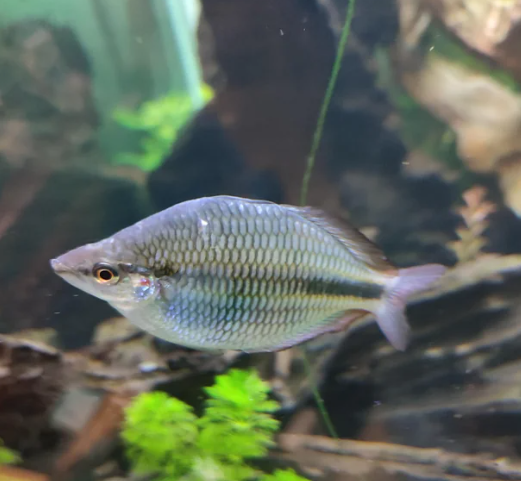
Poor tank maintenance, including thorough cleaning of bio-media, bleaching the substrate, and massive water changes, can reduce the lifespan of your fish to a great extent. Ensure that you understand the proper routines and can apply them during maintenance. Depending on the type of tank you have, the routines may vary slightly.
9. Toxic Plants and Substances
While you may not find them in the stores, some plants collected in the wild can be toxic to your fish. Most of these are flowering plants and are known for their attractive foliage. A few examples may include:
- Dumb Cane
- Devil’s Ivy
- Peace Lily
- Philodendron
In contrast, toxic substances, such as lead, mercury, and copper, can be found in aquarium decorations sold in stores. These toxic substances, mostly heavy metals, seep into the water and cause massive damage to the gills and internal organs of the fish.
Learn About Snail Eggs: Complete Care Guide
10. Genetic Predisposition
Usually a result of careless breeding practices, some fish are genetically predisposed to diseases. This issue is typically mitigated by sourcing your fish from reputable breeders. But these are the cases that you can’t control and have to accept and move on.
FAQs
There are a few reasons for your fish to constantly die. Incompatible tank mates, genetic issues, water quality issues, and overfeeding typically contribute to the majority of the deaths. We’ve discussed detailed strategies to help you mitigate them.
Salt can be beneficial to freshwater fish in a rare few cases if they have developed diseases like fin rot and ich. However, it’s usually considered a last-ditch effort to revive the dying creature.
It’s usually not advised to change the water solely because a fish has died. Do perform regular water changes irrespective of whether a fish died or not. However, if your fish are constantly dying, you can perform major water changes to eliminate any parasites or toxic elements causing the issue.
The Bottom Line
We’ve discussed the reasons why your fish keep dying and have listed a few mitigation strategies that may help you overcome the crisis. In most cases, monitoring the water parameters and taking proper precautionary measures promote an overall healthy aquarium with happy inhabitants.
No related posts.

